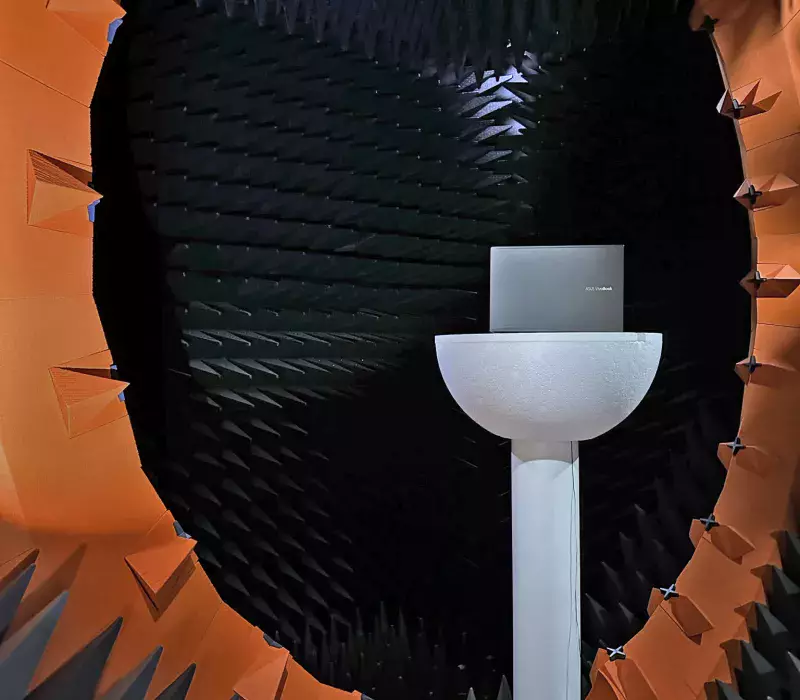
With this new SG 24 combined with WaveStudio, not only can we measure higher frequencies, but also test more devices at faster rates, saving up to 50% of time: a strong asset in a highly competitive environment.

THE CHALLENGE
ASUS, one of the world’s leading technology enterprises, pursues innovation to offer a portfolio of digital products that meet the highest levels of quality standards. A multinational company, ASUS is known for the world’s best motherboards and high-quality personal computers, monitors, graphics cards, routers and other technology solutions.
A key part of its growth is the bringing to market of next-generation smart technologies, using the latest connectivity standards. The laptops and All-in-One (AiO) PC are ASUS’ most iconic products and are therefore subject to ongoing product development in line with the latest technological advances and available communication protocols.
When ASUS began developing laptops capable of supporting Wi-Fi 6E, the team quickly realized that testing devices in the relevant frequency bands and surely further 5G advancements would not be possible in their existing test and measurement system. Their current system had reached its limits at 6 GHz. A system upgrade was necessary if they were to continue to be able to verify new product designs in line with the rapid time-to-market demands of the industry.
Unlike Wi-Fi 6 and previous generations that were limited to the 2.4 GHz to 5 GHz radio bands, Wi-Fi 6E will use bandwidth up to the new 6 GHz band, providing non-overlapping channels for less congestion in areas where lots of networks are operating, thus offering better connection and improved speeds.
In particular, Wi-Fi 6E allows for 14 additional 80 MHz channels or seven additional 160 MHz channels, extending the upper frequency from 5.8 GHz to 7.2 GHz, meaning passive testing of new computers must be conducted in operating frequencies up to that point.
A second, important consideration when upgrading the test system was the size of the DUT. The new test system needed to be compact enough to be located onsite at ASUS Headquarters, Taipei , while being able to accommodate the new laptops which are bigger than their predecessors at 60 cm in length and AiO computers. With the increasing need for fast iteration testing of products in development, and the quantity of tests they required to conduct daily, the system needed to be fast. The measurement speed and accuracy of the system would enhance the overall performance and rate of new product development. The ASUS engineers were also keen to identify a system software suite that offered an intuitive interface and was easy to set up and navigate.
Onsite testing for speed and confidentiality
To meet the testing requirements of the new 6E connectivity standards, ASUS could have used a third-party laboratory, or taken their new products to the antenna manufacturer’s testing facility.
The time-to-market window for a new ASUS laptops is several months, making time savings essential. The team needed an onsite solution in order to verify their developments quickly and get from prototypes to production and meet those demands.
When developing cutting-edge technologies in a highly competitive marketplace, confidentiality is another important consideration. Taking yet-to be-released products to a third-party testing facility opens the risk for the latest laptops or AiO designs to be photographed and leaked on social media before an official launch to market. These are issues ASUS were extremely keen to avoid.
Learn how the MVG SG 24 spherical near-field multi-probe array system with integrated WaveStudio software was the right solution to enable ASUS to test the higher frequencies of Wi-Fi 6E and future 5G developments.


